Both the Flycraft Stealth 2.0 and the NRS Approach 120 are great fishing rafts. I've had the opportunity to spend time on the water at Camp Manatee on the Santa Fe River in Florida rigorously testing these two amazing fishing rafts with electric motors. I will be comparing the two boats side-by-side. Hopefully, this will be helpful to those looking for the best small fishing raft that you can rig with a Torqeedo!
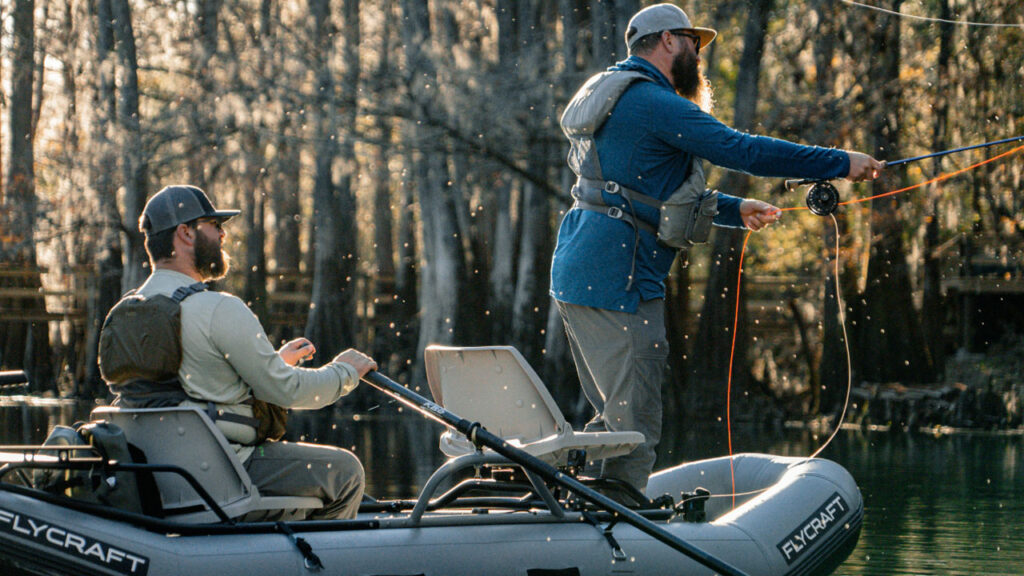
Specs Showdown:
Before delving into the nuances of on-water performance, let's dissect the specifications that define these fishing companions. Both boats are engineered for tandem fishing in challenging white water, yet they exhibit subtle differences.
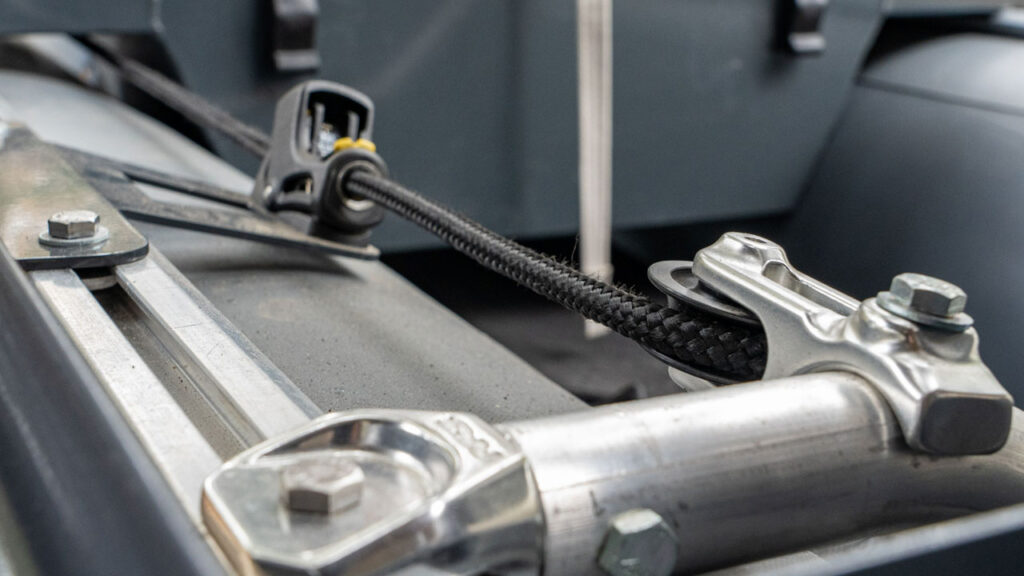
The NRS Approach weighs in at 120 lbs, slightly heftier than the Flycraft's 103 lbs. A significant contributor to this weight disparity is the heftier NRS frame and storage boxes. In terms of length, the NRS measures 12 feet, while the Flycraft stands at 11 feet 8 inches. However, the Flycraft width measures 51 inches compared to the NRS's 49. Moreover, the NRS boasts larger diameter tubes, provides a commendable increase in capacity.

Floor Dynamics and Accessories:
Moving on to the underfoot dynamics, both boats feature drop-stitch floors capable of inflating to approximately 8 PSI, ensuring a sturdy and unfaltering surface. The NRS Approach does, however, have a thicker floor supplemented by an EVA pad for enhanced durability and grip.
When it comes to accessories, the NRS Approach comes fully loaded with storage boxes, fly rod holders, thigh hooks, and a standard motor mount. The Flycraft, on the other hand, offers various packages that include some of the accessories at an additional cost. Flycraft also offers stand-alone accessories so you can really build out your setup. A comparably equipped Stealth 2.0 would be similar in price to the Approach once all the items were added.

Durability and Build Quality:
Both rafts are built to handle the river for many years. As I mentioned earlier, the NRS raft is a bit heavier. Most of this is due to the frame and storage boxes, but some of it is the extra material that lines the heavier wear areas on the raft. Both rafts have an added layer of material, but the NRS Approach 120 has even more material in those heavy wear areas.
In addition, as I pointed out earlier, the NRS raft has the extra EVA pad on the floor of the boat as well. Overall, I believe these are both durable and quality-built options, but I would give a slight edge to the NRS Approach, keeping in mind that it is a trade for a bit of extra weight.
Stability, Speed, and Maneuverability:
Stability is paramount in any fishing expedition, and both boats deliver commendably. It was very hard to tell much of a difference here at all. The Flycraft Stealth 2.0 was slightly wider, but the NRS has larger diameter outer tubes so they offset each other in my opinion. For speed, I could really tell no noticeable difference.
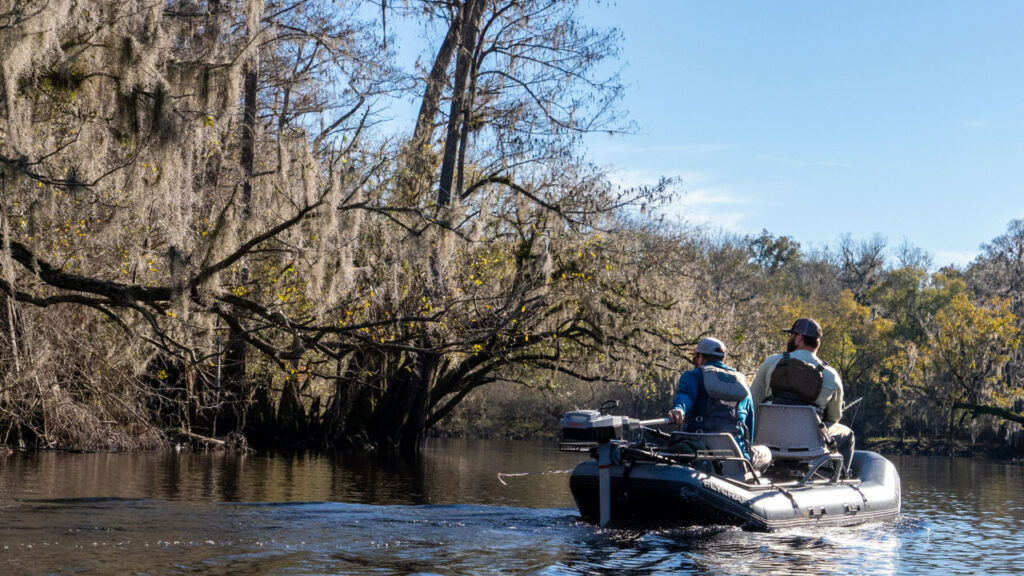
I ran them both on the same stretch of water in the same current. I also took advantage of the Torqeedo Travel 903, which is a 2.5HP electric outboard. I could see no difference in speeds while rowing or motoring. When it comes to maneuverability, both boats shine, capable of spinning in place effortlessly.

Fishability and Features:
The primary purpose of these vessels is evident — providing an exceptional fishing experience. Both excel in this regard, each bringing its unique advantages to the table. The Flycraft offers swivel chairs even in its base package, providing flexibility for anglers when casting. It is also the lightest of the two, which may not be super noticeable on the water but can be handy when portaging.
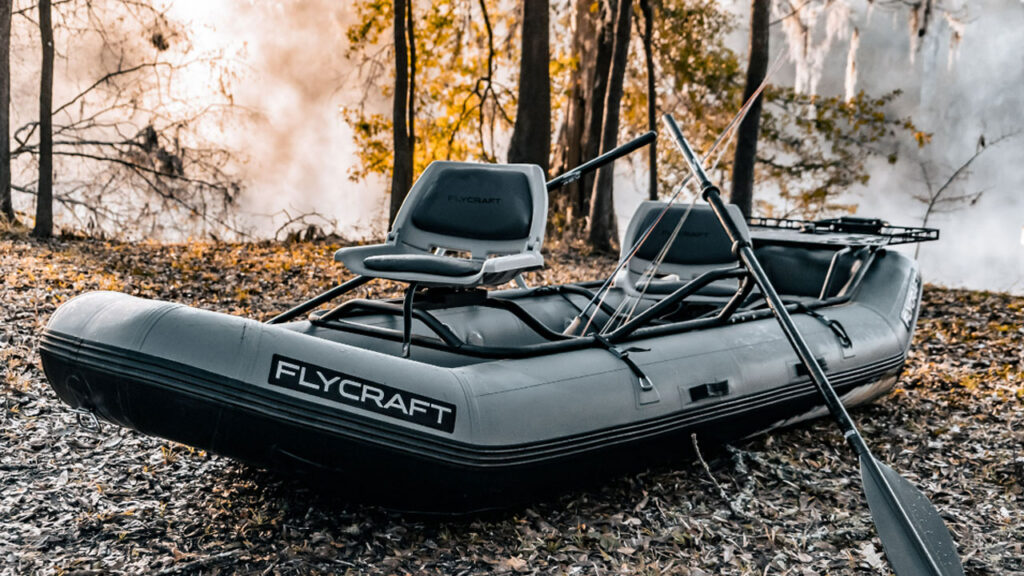
On the flip side, the NRS Approach introduces a thigh brace standard, offering added stability for standing casts. It also allows for more adjustability in the setup with the frame incorporating a track system making it easy to adjust. This also makes aftermarket rigging a breeze when utilizing products from companies like Yakattack, who have developed track-mounted accessories specific for anglers.
Lastly, I want to talk storage. The NRS Approach comes with the boxes under the seat, which I feel is an awesome use of space. They are sealed and keep your gear out of the way and contained. The Flycraft I tested had the gear rack on the rear. However, with the motor option, you would not be able to use it to its full potential due to the tiller handle needing to pivot above it.
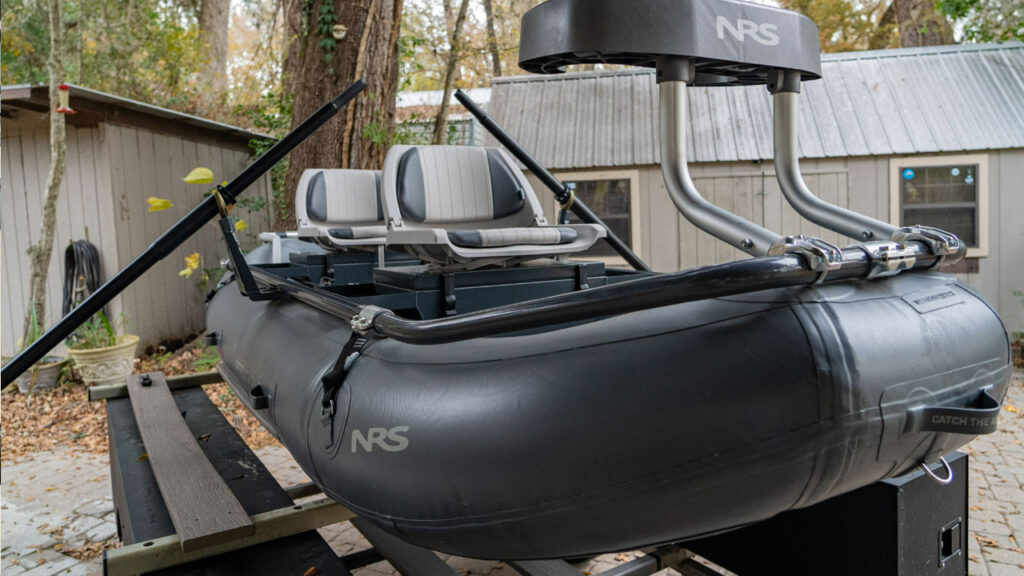
Value Proposition and Closing Thoughts:
Considering the value these boats bring to the angling table, the initial price difference becomes negligible when you factor in additional accessories for the Flycraft. Both boats are well-priced, aligning with the quality and features they offer. If you are considering one or the other, I would suggest looking at the standard features of the Approach vs the accessories you would want or need to add to the Stealth. This will give you a more apples-to-apples price comparison.
In conclusion, both the NRS Approach 120 and the Flycraft Stealth 2.0 stand out as commendable options for anglers seeking a versatile and reliable platform. The NRS Approach impresses with its adjustability and sturdiness, while the Flycraft offers swivel seats and a lighter build. Personal preferences might sway towards one or the other, but rest assured, both boats are exceptional choices!
Reviews and Video:
I did a review, in-depth, for each of these rafts as well. Check them out:
– Flycraft Stealth Review
Here's my full comparison review video:
For an in-depth review of each boat, head over to our YouTube channel. And if you found this content insightful, do consider subscribing. Tight lines, and happy angling!



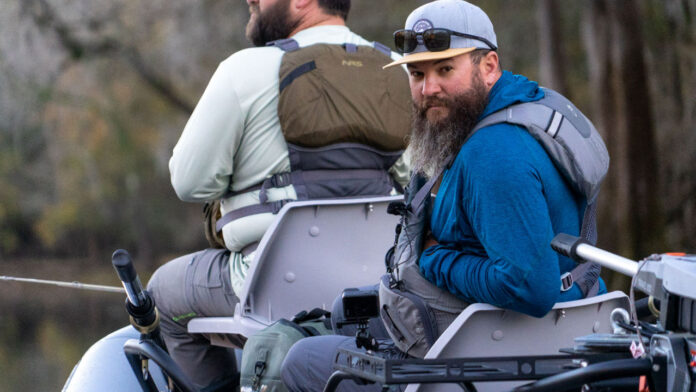
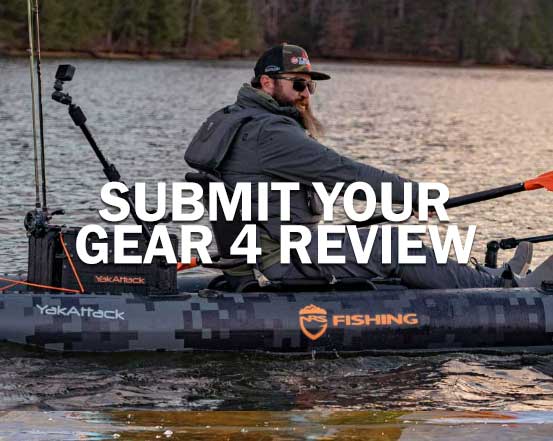









GREAT ARTICLE !